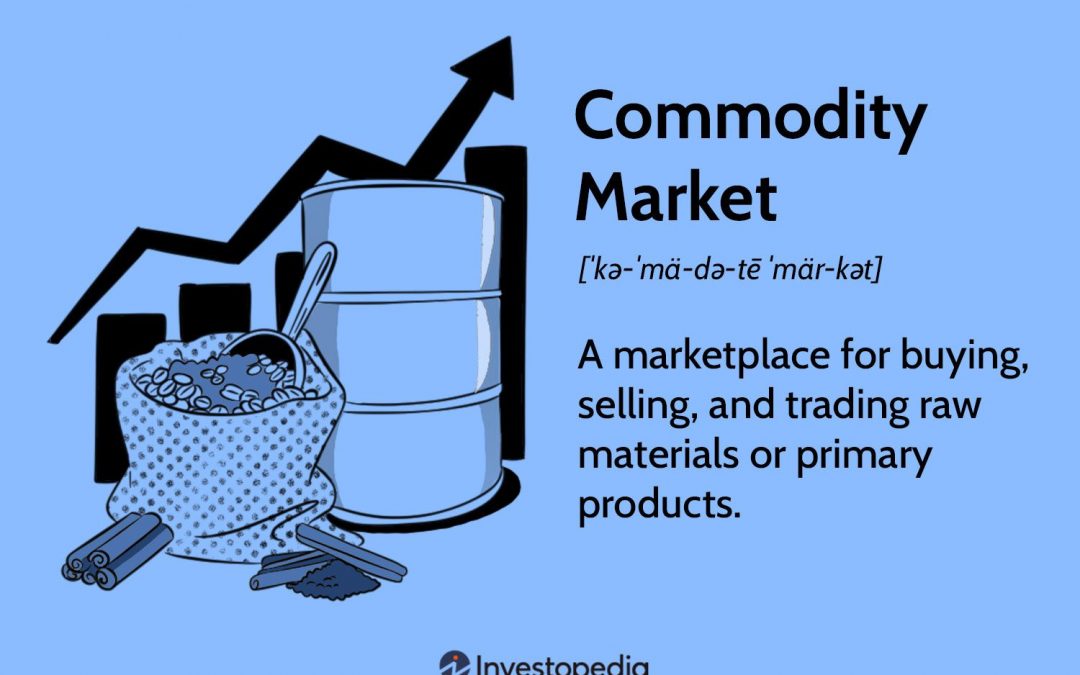Investing in commodities involves buying and selling physical goods or financial instruments that are based on the prices of raw materials or primary agricultural products. Commodities can be an attractive investment option for diversification and hedging against inflation, but they also come with unique risks and considerations. Here’s an in-depth explanation of how to invest in commodities, strategies to increase returns, and some examples of popular commodities:
How to Invest in Commodities:
Direct Ownership: One way to invest in commodities is through direct ownership, where investors physically buy and hold the underlying assets. For example, you can purchase gold bars or silver coins as a direct investment in precious metals.
Futures Contracts: Futures contracts are agreements to buy or sell a specific quantity of a commodity at a predetermined price on a future date. Futures contracts are traded on commodities exchanges and provide investors with exposure to commodity prices without the need for physical ownership.
Exchange-Traded Funds (ETFs): Commodity ETFs are investment funds that track the performance of a specific commodity or a basket of commodities. These ETFs can be bought and sold like stocks on major stock exchanges, providing investors with convenient access to commodity markets.
Commodity Mutual Funds: Similar to ETFs, commodity mutual funds invest in a diversified portfolio of commodities. These funds are managed by professional fund managers and offer exposure to commodity prices through various investment strategies.
Commodity-Linked Notes: Commodity-linked notes are debt securities whose returns are tied to the performance of a specific commodity or a basket of commodities. Investors receive principal protection at maturity, along with potential returns linked to commodity price movements.
Strategies to Increase Returns:
Diversification: Investing in a diversified portfolio of commodities can help spread risk and reduce the impact of price fluctuations in any single commodity. Diversification can be achieved by investing in commodity ETFs, mutual funds, or diversified commodity indices.
Market Timing: Monitoring supply and demand dynamics, geopolitical events, and macroeconomic indicators can help investors identify opportune times to buy or sell commodities. By anticipating shifts in commodity prices, investors can potentially enhance returns through strategic buying or selling.
Leverage: Futures contracts allow investors to trade commodities with leverage, meaning they can control a larger position with a smaller amount of capital. While leverage can amplify returns, it also increases risk, as losses can exceed the initial investment.
Seasonal Trends: Certain commodities exhibit seasonal price patterns due to factors such as weather conditions, harvest cycles, or consumer demand. Understanding these seasonal trends can help investors capitalize on recurring price movements and increase returns.
Popular Commodities:
Precious Metals: Gold, silver, platinum, and palladium are popular precious metals that are commonly used as stores of value and hedges against inflation and currency fluctuations.
Energy: Crude oil, natural gas, and gasoline are essential energy commodities that are widely traded on global markets. Energy prices are influenced by factors such as geopolitical events, supply disruptions, and changes in global demand.
Agricultural Products: Commodities such as wheat, corn, soybeans, coffee, and sugar are agricultural products that are traded on commodities exchanges. Agricultural commodity prices are influenced by factors such as weather conditions, crop yields, and global demand trends.
Industrial Metals: Copper, aluminum, zinc, and nickel are industrial metals that are used in various manufacturing and construction industries. Industrial metal prices are influenced by factors such as economic growth, infrastructure development, and global trade dynamics.
Investing in commodities can provide diversification benefits and potential returns, but it’s essential to carefully evaluate the risks and conduct thorough research before investing. Factors such as commodity-specific supply and demand dynamics, geopolitical events, and macroeconomic trends can significantly impact commodity prices, so staying informed and implementing disciplined investment strategies is crucial for success in commodity investing. Additionally, consulting with a financial advisor can provide personalized guidance based on your investment objectives and risk tolerance.

